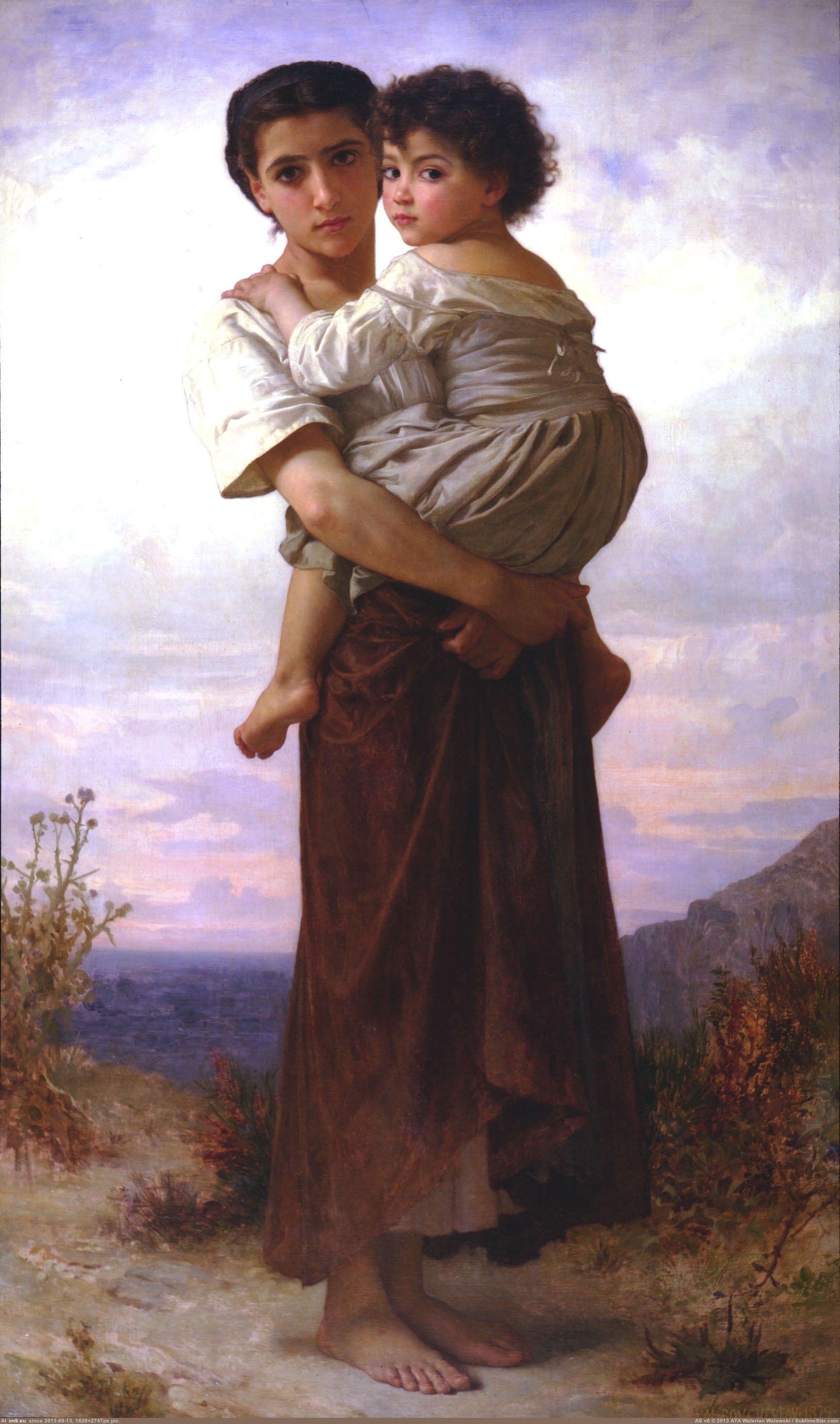Today, 30 July, marks 268 years since the the Great Gypsy Round-up, a brutal operation of ethnic cleansing concocted and planned by the office of King Ferdinand VI, the son and heir of the first Spanish Bourbon monarch, and coordinated from the War Office of the minister the Marquis of Ensenada. The macabre operation was planned and carried out in order to arrest, concentrate, imprison and exterminate “all the gypsies of the kingdom of Spain”. A brutal hunt that resulted in a tragic 12,000 dead, thousands of families separated and broken forever and the economic ruin of the Hispanic Romany community. A dark chapter in the history of the supposedly enlightened Spain which has been deliberately concealed from society. No textbook of the Spanish educational system has ever made any reference to this monstrous operation, which shows how the Spain of the “national interest” -that of the supposedly enlightened Bourbons- was built on blood and fire. And against the Romany community.
The setting
The year was 1749. The absolute monarchy, varnished with a patina of supposed enlightenment, had fully imposed itself on Spain. And the Castilian idea of Spain had imposed itself too. The Spanish administration governed despotically, faithfully following the style that the Bourbon dynasty had imported from France. The countries of the ancient Crown of Aragon, defeated and devastated, had been converted into a huge prison and their inhabitants converted into some kind of prisoners, subjected to laws of rehabilitation: the process of forced assimilation to a renewed and triumphant Spain, exclusively Castilian and Bourbon. From the end of the War of the Spanish Succession in 1715, the Bourbon administration, in little less than 35 years, had dismantled the règim foral system of devolved regional powers, had plundered the regions' archives and had enacted dozens of laws persecuting the Catalan and Aragonese laws and cultures. Castilian Spain, in other words, the modern Spanish State, was built on an ideology of supremacy and of purification.
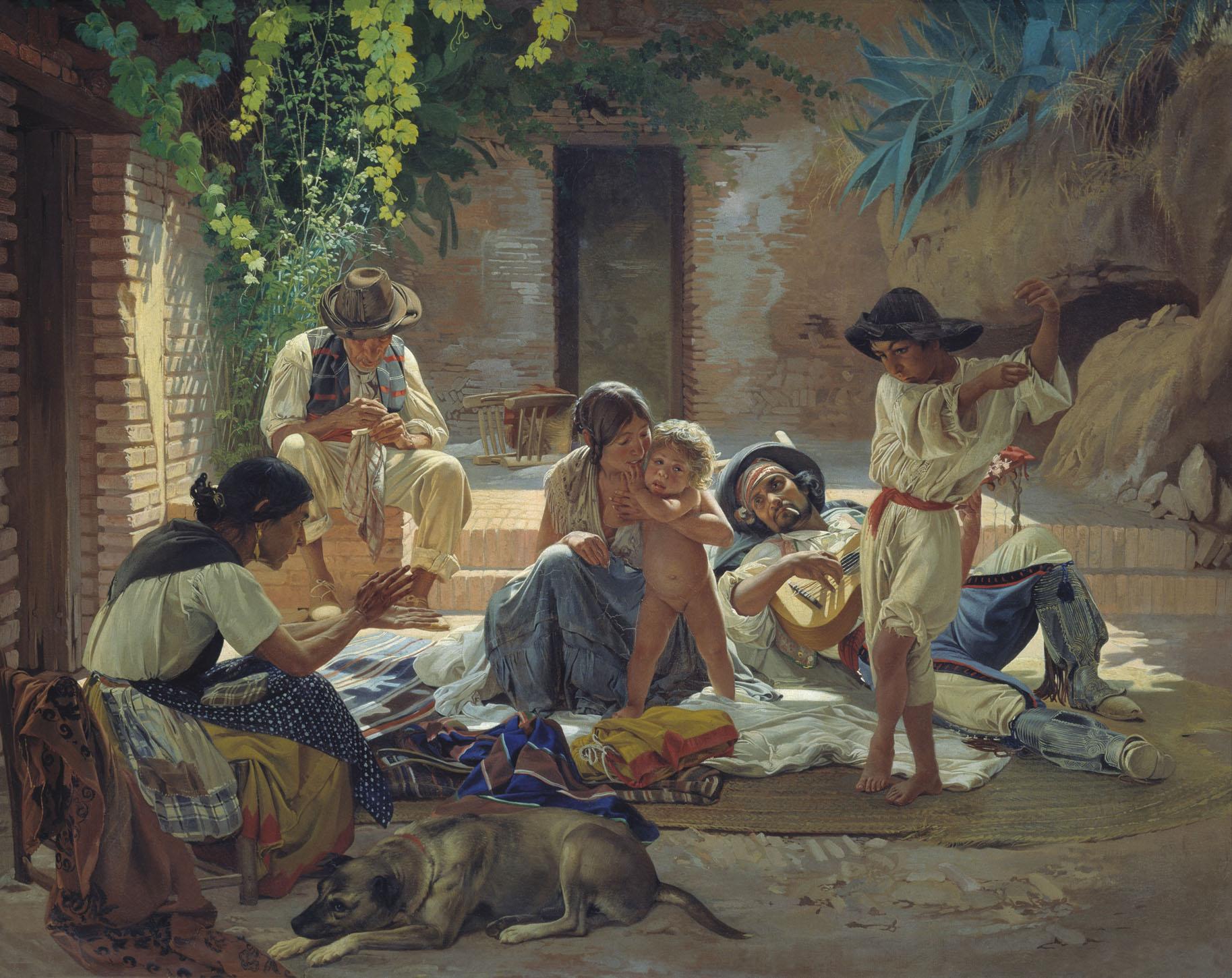
Gypsy family / Source: Wikipedia
The gypsy communities
In the Bourbon Spain of 1749 neither Jews nor Christian Moors remained. Plundered, massacred and expelled over the course of the two previous centuries, the Spain of 1749 was at the finishing line of a macabre race that had justified the ethnic cleansings of 1492 against the Jews and of 1609 against the Christian Moors. Within this thinking, the gypsies remained the final dissident element. Historiographical sources estimate that the Spanish Romany community included some 50,000 members -a little less than 1% of the population-, spread unevenly around the territory. The same sources reveal that in 1749 the majority of this community was concentrated in the “provinces” of Catalonia and of Granada, the eastern half of what's now Andalusia. But they also reveal that there were numerically important communities in the larger cities of the kingdom. In the Spanish capital they represented 5% of the population and they would be the ones who suffered the most in the Great Gypsy Round-up.
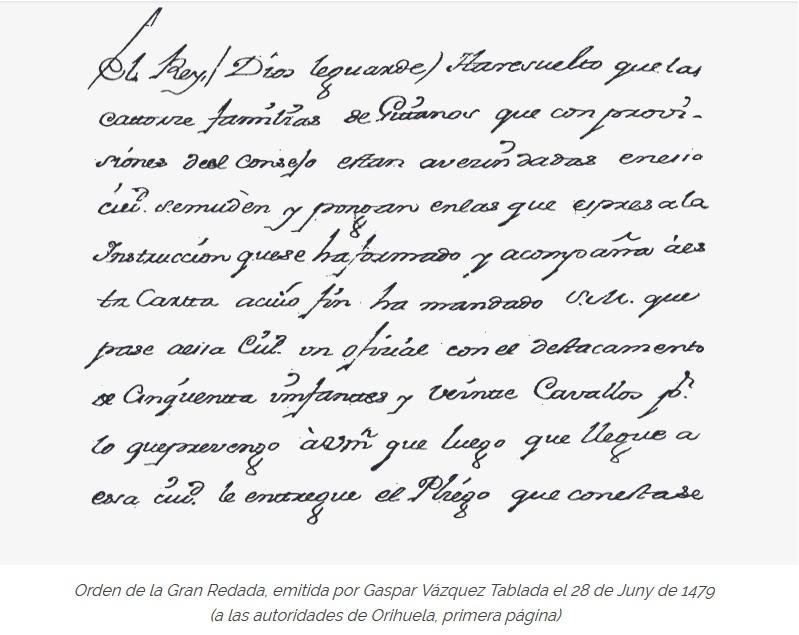
Order for the Great Gypsy Round-up to the authorities in Oriola, Valencia / Source: Museu Virtual Gitano
The Great Round-up
Weeks before the fateful date, the king Ferdinand VI conceded full powers to the marquis of Ensenada, Minister of War, and to the bishop Vázquez Tablada, president of the Council of Castille, that is, the equivalent of the president of the government. In Ensenada's office, the War Office, the Great Gypsy Round-up was planned: an operation to locate, arrest, concentrate and exterminate “all the gypsies of the kingdom”, which could have inspired the Nazi chiefs of the Third Reich. To locate their victims, they counted on the collaboration -on occasions forced and on occasions enthusiastic- of the provincial elements of the Bourbon Administration. The plan, conducted in strictest secrecy, of Ensenada and Tablada, with the approval of the king, consisted in arresting during the night of 30th to 31st July all people of gypsy ethnicity who had been previously -and secretly- documented by the collaborators in the “provinces”.
Capture and slavery
The night of 30th to 31st July 1749, the Army of the King violently, and with no warning, entered into the gypsy quarters of the main cities of the Bourbons' peninsular domains. The sources reveal that, to avoid anyone escaping, the Army closed all the entrances to the neighbourhoods and turned this macabre operation into an true hunt. Of people and families. But the tragedy had only just begun. Once captured, they were separated. The men on one side and the women and babies on another. The men were confined in military prisons at the shipyards of Cartagena in the south-east, Cádiz in the south and Ferrol in the north-west where they would be enslaved in the naval construction works to regenerate the decrepit Spanish navy. Some would even be sent to galleys. The women and the children would be confined in convents and charity houses, and also be enslaved in textile production, which was the traditional source of money for those institutions.
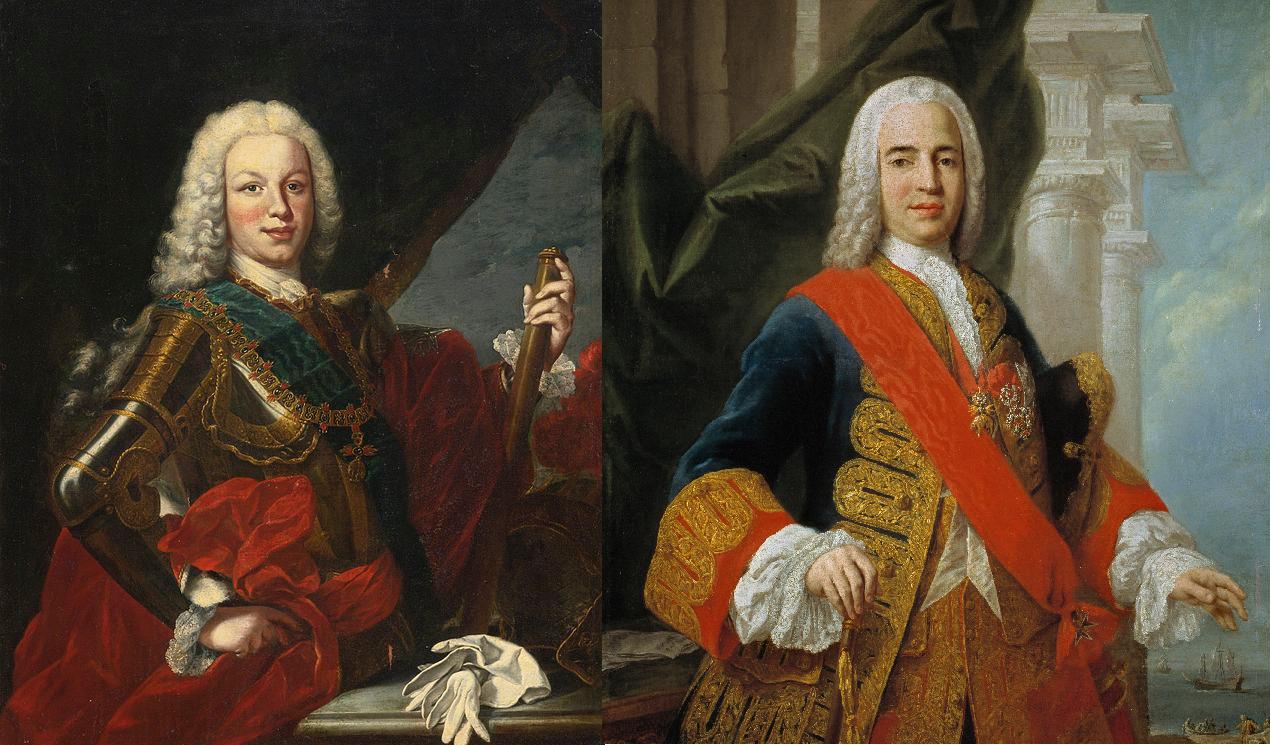
Ferran VI and the marquis of Ensenada / Source: Wikipedia
The gypsies of Catalonia and Granada
For some reason that the sources do not explain, the authorities of the “provinces” of Catalonia and of Granada did not carry out the secret instructions of the Round-up until 25 days later. Nor do they detail the reprisals, those typical of an authoritarian regime, that they must have unleashed. What they do explain is that the gypsies of Catalonia and Granada had time to escape and find refuge far from the army's claws. Later, the authorities in Catalonia and Granada would draft dozens of requests “for mercy” in favour of the return of the Romany communities, arguing that they had deep roots in their societies and that they were an important element of the local economies. They were saddlers, livestock dealers, cart-based traders, rag-and-bone men, and even innkeepers. This could be the reason -it's open for debate- why the Catalan and Granada authorities -Bourbons, let's not forget- looked the other way when the brutal hunt got underway.
The Castilian gypsies
The Castilian gypsies, on the other hand, did not have the same good luck. Or, to be more precise, they had more bad luck. And it's not that they didn't have the same social roots. Nor that they weren't part of the economic fabric of the region. The report by d'Ensenada and de Tablada, authorised by the king, was a horrific compilation of the most abominable racial prejudices and the strongest ideology of Spanish supremacy, which could have inspired the leaders of the Franco regime. Primitive stigma of the uprooted, criminal and heretical gypsy, responsible for the state of uncertainty that stained the orderly Spain of the Bourbons. Prejudices converted into the ideological nerve tissue and the sociological propaganda of the masses with some anti-gypsy tradition. The Catalan gypsies had their assets stolen -which by itself proves that they had social roots and were active economically- and their properties were auctioned off to pay the expenses of the macabre raid.
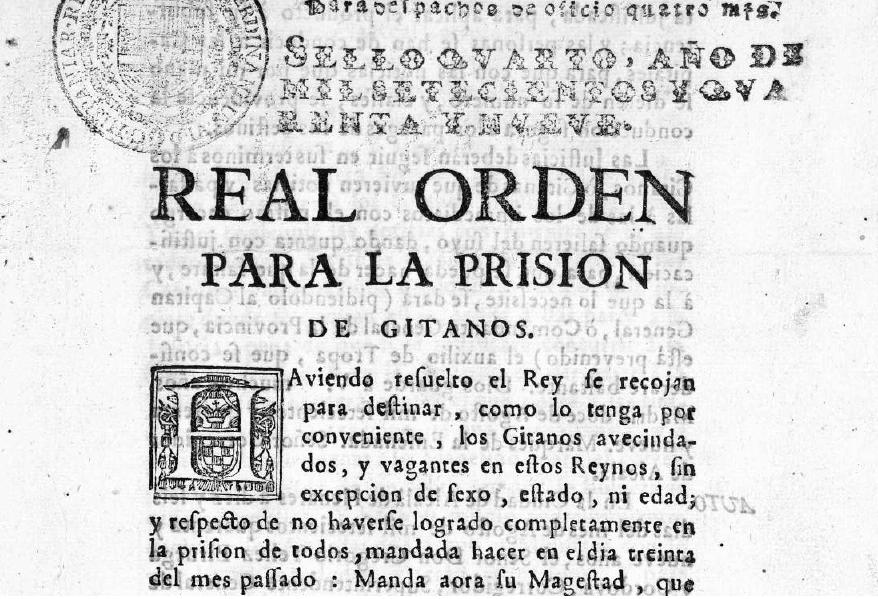
Royal Order / Source: Wikipedia
The extermination
It is not necessary to make much of an effort to imagine that the path to the extermination camps must have been dramatic. The sources report an awful list of punishments carried out indiscriminately and with impunity. At the extermination camps, the mortality rate -the final aim of the macabre raid- shot up. Bad food, the abominable hygiene conditions, the brutal punishments and work accidents massacred the Romany community. The sources estimate that, between the road, the shipyards and the factories, 12,000 people died, approximately a quarter of the total Spanish gypsy community; that thousands of families were separated and broken forever, and that the community was ruined. Twelve years later, in 1761, the new king Charles III, half-brother of Ferdinand, annuled the law. The royal chancellery concluded that the operation, in spite of the high mortality attained, had been a disaster. And, without recognising nor compensating the victims, gave the order to move on "discretely, to not stain the good name of my brother the king Ferdinand". The genocide of the gypsy people.
Main image: Gypsy mother and child / Source: Wikipedia

